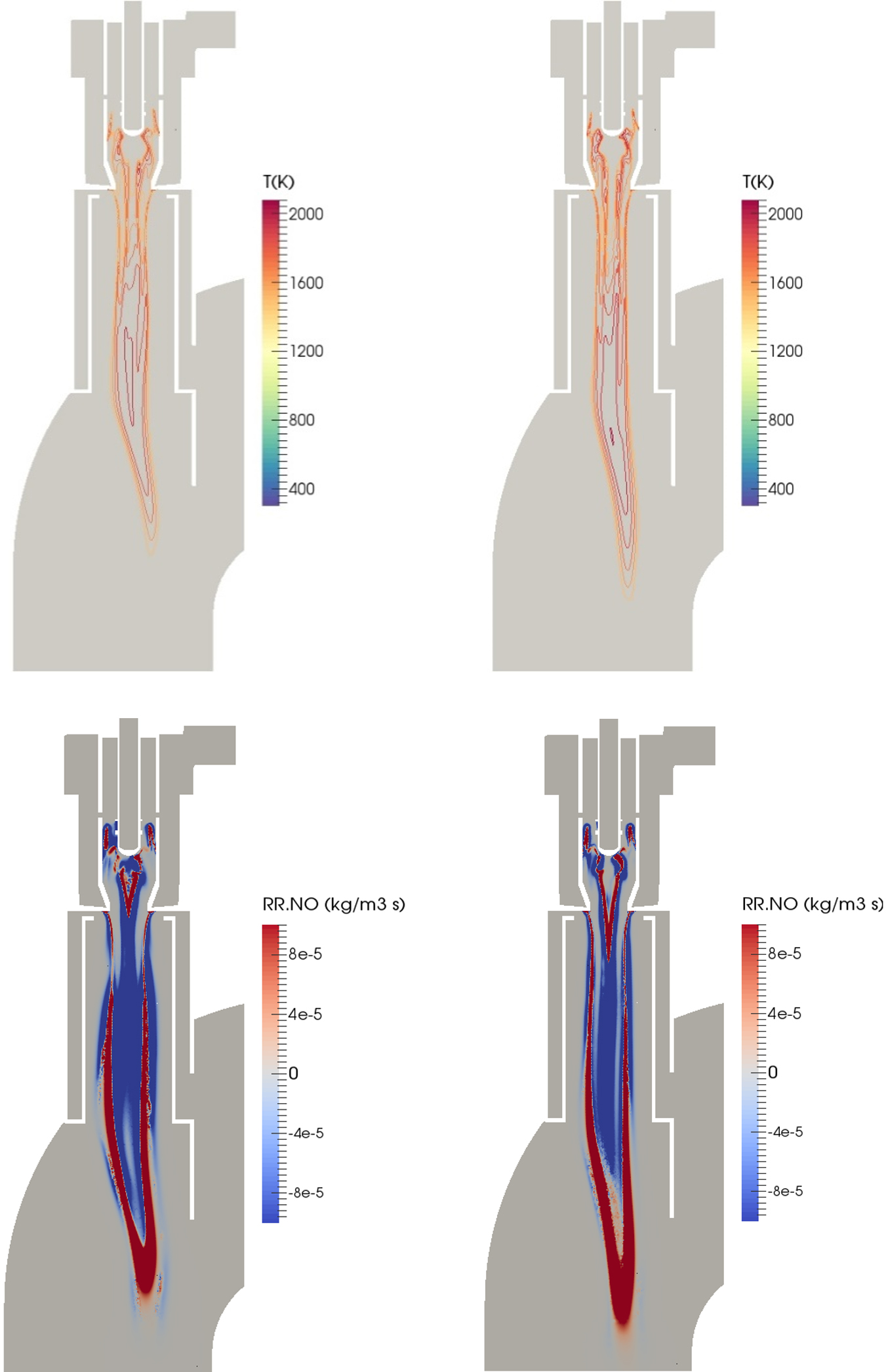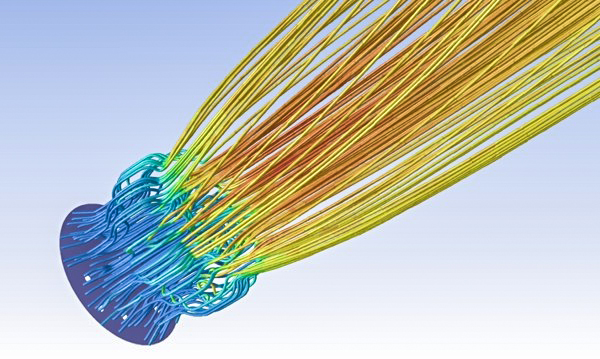Introduction
Existing furnaces must reduce their CO2 emissions by 55 % till 2030. Therefore, alternative energy sources, especially hydrogen, biological gases and electric energy have to be used. Alternative gases change the form of the flame, the flame impulse, the flame speed and the furnace atmosphere.
To ensure consistent operation in combination with improved product quality, new burner concepts need to be developed and applied to existing furnaces. In previous funding periods, tools and methods for modelling furnaces and burners were developed. These methods should be applied to investigate alternative energy sources in existing furnaces. A partially electrically heated furnace offers potential to reduce the CO2 emissions. In order to realize a partially electrically heated furnace from an economical point of view, the furnace should be able to adapt to fluctuations in the price of electricity.
Objectives and Motivation
- Utilization of numerical models and development of industrial burners, that are capable to operate with alternative gases ranging from 0-100% without significant changes
- Prediction of the NOX emissions
- Manufacturing of the developed burners and testing in a burner test camber, to compare the simulation results with measurements.
- Realization of a partially electrically heated furnace to reduce the CO2 emissions.
- Investigation of several methods to adapt existing furnaces with electric heating by using CFD and “FastCalc” approaches.
- Use of the developed CFD models of several types of furnaces (tunnel furnace, shaft furnace, walking beam furnace, rotary kiln, furnaces for steel strips) to access the impact of the developed burners on an industrial furnace.
- Development of a furnace model do determine the affect of the alternative gases to the atmosphere and consequently to the change of the radiative heat transfer
- Further development of the ”FastCalc” approach (prediction of the behaviour of furnaces faster than real time) to “SmartCalc”, a hybrid between “FastCalc” and artificial intelligence, which utilizes computed data from “FastCalc” and predicted data of the artificial intelligence to yield final results.
- Implementation of the “SmartCalc” approach as a digital shadow on a furnace of an industrial partner
Methodology
- Numerical analysis of the existing burner, with the flamelet-equilibrium hybrid model to specify the requirements for the new burner
- Detail and NOX improvement with flamelet methods and the NOX Postprocessor 2.0+.
- Building of a prototype
- Measurement in a burning test chamber, to verify the numerically modelled results.
- Investigating the behaviour of the furnaces on different levels of electric heating using CFD and “FastCalc” methods.
- Determination of the potential reduction of CO2 and other emissions
- Modelling of the existing processes and detailed analysis of the furnaces using different amounts of alternative gases with focus on heat transfer.
- Process improvement with the focus on furnace efficiency and product quality.
- Creating a “FastCalc” model of the furnace and create a digital data array for the furnace
- Developing a measurement data based artificial intelligence to predict the behaviour of the furnace and creating a blending algorithm to utilize both, “FastCalc” and artificial intelligence results
- Run the blending algorithm as digital shadow for an industrial furnace
- Statistical comparison of the predictions between the digital shadow and operation control system
Results and Application
New burner designs are developed, that can operate from 0-100% with alterative gases and have the potential of additional electric heating on existing furnaces. Data to perform financial analysis for this concept should be available.
Furthermore knowledge to operate different types of industrial furnaces using alternative gases should be deepened. Process optimization for operation with alternative gases is carried out and a digital shadow is created for various industrial furnaces.

 DE
DE EN
EN
